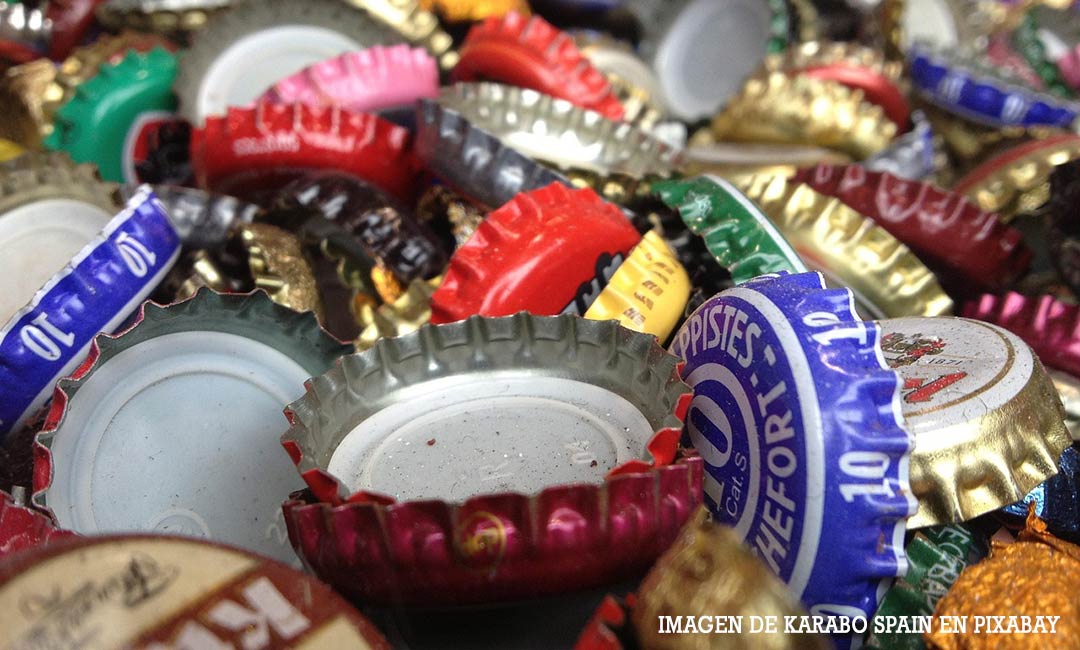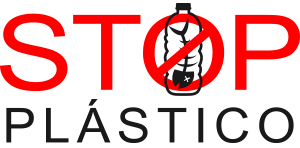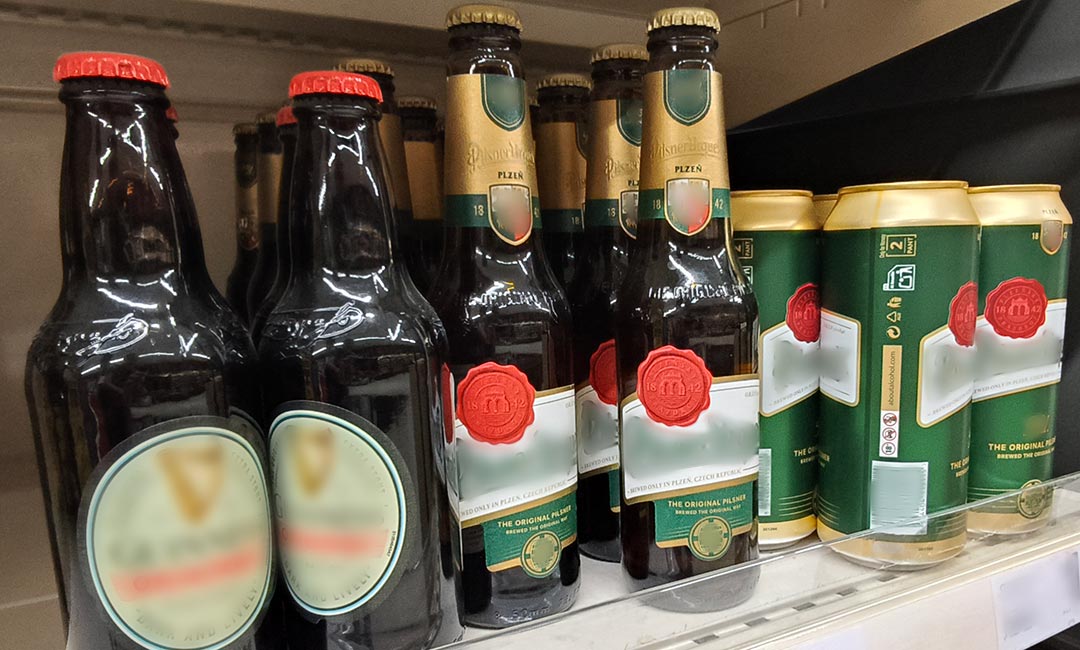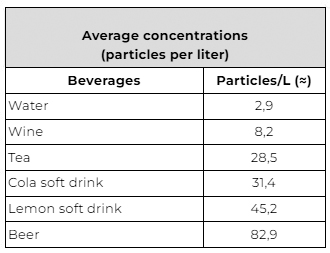In May 2025, researchers from the French agency ANSES, led by Dr. Guillaume Duflos, published a study claiming that beverages packaged in glass contained more microplastics than the same beverages in plastic containers.
Recently, another study by Dr. Jane Muncke of the Food Packaging Forum Foundation analyzed this report and raised serious doubts about whether glass containers generate more microplastics than plastic containers.
Presence of microplastics in different types of beverages available on the French market
The French Agency for Food, Environmental and Occupational Health & Safety (ANSES) published a study in May 2025 confirming the presence of microplastics in all the beverages analyzed.
The study analyzed the presence of microplastics in water, wine, tea, cola and lemonade, and beer. In different types of packaging: plastic, glass, metal, and carton.
Surprisingly, the study yielded unexpected results. Tin and glass containers had the highest levels of microplastics per liter. Polyester particles were the most abundant in this type of container and included several types of unknown polymers.
In carton-type containers, the study did find a greater abundance of cellulose particles, which was expected.
Tin and glass containers had the highest levels of microplastics per liter.
The main hypothesis of the study’s authors was that the polyester found came from the paint on the metal closure of the container.

According to the study, the polyester found came from the paint on the metal closure of the container.
Concerns about the study that found glass bottles contain more microplastics
Another recent study by Dr. Jane Muncke of the Food Packaging Forum Foundation analyzes this report and raises serious doubts about the results and conclusions of the ANSES study.
Dr. Jane Muncke believes that the study “Microplastic contamination in a set of beverages sold in France” has methodological and interpretive problems that could lead to erroneous conclusions about the origin and quantity of microplastics, as she comments in her article.
- Doubts about the origin of microplastics.
It does not conclusively prove that the microplastics found come from the packaging, especially from the caps of glass bottles.
In addition, the study criticizes the lack of controls to rule out other sources of contamination. Such as the bottling and filling process, production lines, transport and storage, or the liquid content itself (water, syrups, etc.). - Problems with the standardization of results.
According to Dr. Jane Muncke, expressing the amount of microplastics in terms of particles per liter is not appropriate. The ratio between the surface area of the container and the volume of the beverage varies between container types. - Inappropriate comparison between beverages.
Critics of the study point out that the different beverages are not directly comparable. They are produced using completely different industrial processes.
They have different ingredients and treatments for their production and packaging, which can incorporate microplastics at different stages of the process. - Lack of traceability of the particles.
The original study associated the particles found with the paint on the
caps, based on their color and shape.
This is insufficient as proof of origin, as the study did not carry out detailed chemical analyses to confirm that the particles found matched the composition of the cap materials exactly (FTIR or Raman spectroscopy).
Conclusions by Dr. Jane Muncke
The conclusions of the study by the French Agency for Food, Environmental and Occupational Health & Safety (ANSES) should be interpreted with caution.
It appears that there is insufficient evidence in this study to claim that glass bottles release more microplastics than other types of packaging, and further studies with better controls and adequate standardization are needed before making comparisons or regulatory implications.



